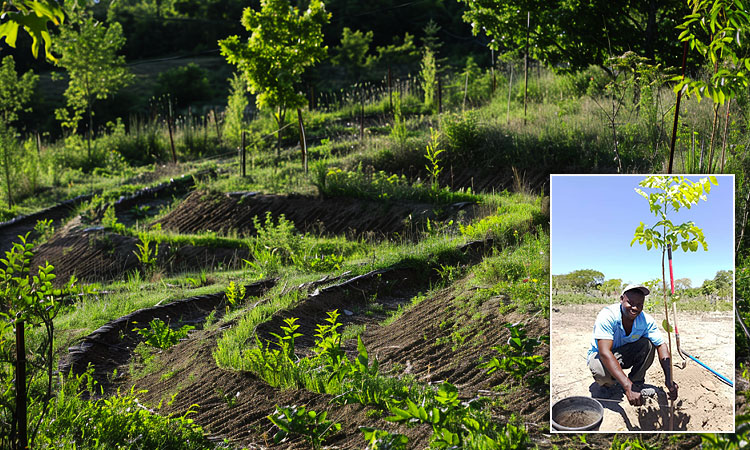Last week, I wrote about new methods of “reforestation without planting trees,” just by doing things to slow down rainwater run-off and allow it to soak into the ground and prevent erosion. One of the methods I mentioned was making terrace swales and berms on hillsides to catch the rain run-off and keep it in the swales for a while so it can better soak into the soil. Another effective use of those terraced swales is to use something called SALT, or Slope Agricultural Land Technologies.
SALT is an appropriate land management technology useful in hilly or mountainous areas that are prone to soil erosion and landslides from heavy seasonal rainfall. The soil on these slopes is fragile and unstable as a result of deforestation or intensive prior cultivation, or free-ranging cattle and goats. Barren, unvegetated mountain sides allow erosion and add to the dry, arid conditions, which leads to increasingly erratic and unreliable rainfall patterns, turning large areas into “deserts.”
When the heavy rains do come during the ”rainy season,” the unprotected hillsides allow rainwater to run quickly downhill, causing landslides, severe soil erosion, and depletion of topsoil. In these situations, sustainable agricultural practices, such as the Sloping Agricultural Land Technology (SALT), are needed. SALT uses the contour swales and berms across the sloping terrain to slow down the water shed, allowing more moisture to soak into the ground and creating hydrated berms and moist swales as a place for vegetation to take root. Within weeks, vegetation starts to spring up. Naturally occurring tree seeds are among the seeds sitting there just waiting for enough moisture to sprout and thrive.
After trees and support vegetation return and get more mature, they contribute moisture to the atmosphere through transpiration, which then promotes more reliable and productive rainfall. The swales of the SALT act as “alleys” to retain more moisture, allowing new vegetation to establish. Many times, villagers will plant crops of fruits and vegetables along these now fertile alleys. This “alley cropping” allows sustainable food production while promoting soil conservation and improvement.
We teach and demonstrate these sustainable agroecology techniques at our Agricultural Training Center (ATC). We call this “development for sustainability,” or “Haitians learning to help themselves.” We thank those donors who help support this work that is changing lives for generations. God bless you.
Rad Hazelip, Assistant Executive Director


